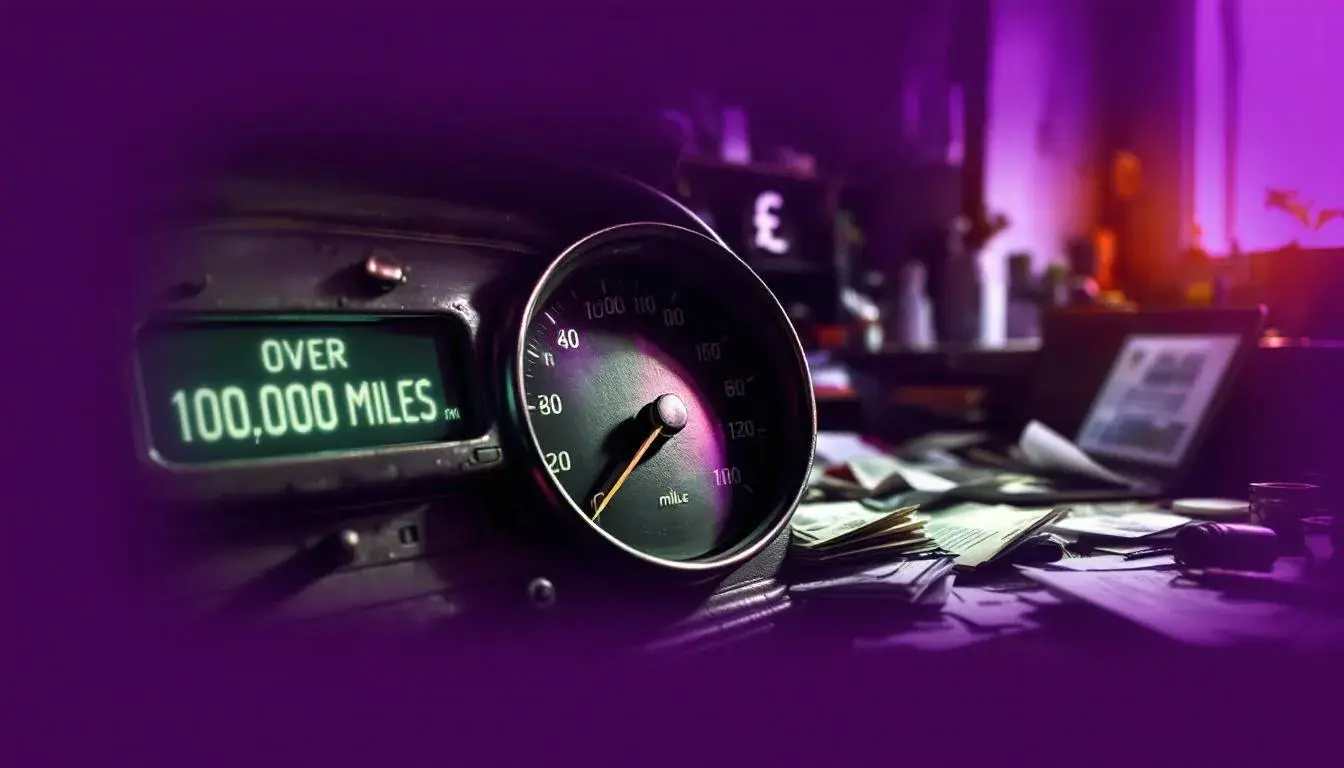
Balloon Payment Car Finance: What You Need to Know

Why This Guide Matters
Choosing the right car finance can have a lasting impact on your finances. Balloon payment finance, often seen in Personal Contract Purchase (PCP) deals, is a popular route for UK motorists seeking flexibility and lower monthly payments. Yet, the concept of a large payment at the end of your agreement can be daunting or confusing.
Understanding how balloon payments work and the implications for your budget is essential. This guide is designed to provide clarity, dispel myths, and arm you with practical information. Whether you’re considering your first PCP agreement or weighing up your financing options for your next vehicle, the details matter. With car prices rising and household budgets under pressure, it’s more important than ever to make informed choices.
The Basics Explained
A balloon payment is a lump sum owed at the end of certain car finance agreements, most commonly with PCP (Personal Contract Purchase) or HP (Hire Purchase) deals. It’s called a “balloon” because it’s significantly larger than your regular monthly payments.
Here’s how it typically works:
Deposit: You pay an initial deposit, usually 10–20% of the car’s value.
Monthly Payments: You make lower monthly payments over a fixed period (often 2–4 years), as you’re only covering the car’s depreciation, not its full value.
Final Balloon Payment: At the end of the term, you can:
Pay the balloon payment to own the car
Return the car with nothing more to pay (subject to mileage and condition)
Trade in the car for a new agreement
The balloon payment is set at the predicted future value of the car (Guaranteed Minimum Future Value, or GMFV). It’s designed to give you options and flexibility, but it’s crucial to understand your potential obligations.
How It Affects You
A balloon payment arrangement can immediately make your dream car seem more affordable, thanks to reduced monthly costs. But the implications go further. Here’s what you need to consider:
Budgeting: Lower monthly payments help with affordability, but the large final payment can be a shock if you want to keep the car. Planning ahead is vital.
Flexibility: The option to hand back the car at the end means you’re not tied into ownership. This can suit those who like changing cars every few years.
Interest Costs: Because you’re deferring a substantial part of the payment to the end, you may pay more interest overall compared to traditional HP agreements.
Equity Position: If your car is worth more than the balloon payment at the end, you could use the difference as a deposit on your next car. If not, you can walk away.
It’s essential to be clear about your long-term intentions. Are you likely to want to keep the car, or is flexibility your priority? Make sure the structure of your finance agreement matches your goals.
Our Approach
At Kandoo, we recognise that every motorist’s circumstances are unique. Our philosophy is to provide transparent information and tailored guidance so you can make the right choice.
How we help you navigate balloon payment finance:
Comprehensive Comparisons
We compare PCP and HP balloon payment deals from multiple lenders, not just one source. This gives you a realistic picture of what’s available on the market.
Clear Explanations
We’ll break down every cost: deposit, monthly payments, balloon amount, and total interest. You’ll see the numbers in black and white.
Suitability Checks
We ask about your budget, driving habits, and future plans. Are you likely to exceed mileage allowances? Is outright ownership important? Our advisors guide you to the most suitable finance structure.
No Pressure, Just Insight
Our brokers won’t push you towards PCP if it’s not the right fit. Instead, we help you weigh the pros and cons, considering alternatives like straight HP or personal loans.
Support at Every Step
From initial quote to signing, and even at the end of your agreement, we’re on hand to answer questions and help you navigate your options—whether that’s settling the balloon payment or arranging a part-exchange.
Our aim is straightforward: clarity, confidence, and the right car finance solution for you.
Before You Decide
Before signing up for a balloon payment car finance deal, ask yourself these key questions:
Can I realistically afford the final balloon payment if I want to keep the car?
How likely am I to exceed any mileage limits, and what are the penalties?
What are my plans at the end of the agreement?
Am I comfortable with the risk that the car’s value could be less than expected?
Have I compared total costs—including interest—against other finance and loan options?
Many customers focus on the low monthly payments, but it’s vital to look at the bigger picture. If you’re unsure about your ability to pay the balloon amount, make sure you have a plan, whether that’s refinancing, trading in, or simply returning the car.
Always read the small print and ask your broker to explain anything unclear. Remember, finance agreements are legally binding contracts—understanding your rights and obligations is essential.
What’s Real, What’s Hype
There’s no shortage of marketing claims around balloon payment finance. Let’s separate fact from fiction:
What’s Real:
Balloon payments genuinely lower monthly costs
You have flexibility at the end of the agreement
You can avoid the final payment by returning the car
What’s Hype:
Balloon payments always save you money (not always true—interest and fees can add up)
You’ll always have positive equity at the end (depends on car value and market conditions)
It’s the best or only way to finance a new car (many alternatives exist)
Being sceptical of bold promises is sensible. Always ask for a full breakdown of costs and compare with other options.
Pros & Cons
| Pros | Cons |
|---|---|
| Lower monthly payments | Large final payment (balloon) |
| Flexibility at end of term | May pay more in total interest |
| Option to return, keep, or upgrade | Mileage and condition restrictions |
| Easier access to newer cars | Risk of negative equity |
Carefully weigh these factors against your own needs and circumstances.
Other Options to Consider
Balloon payment car finance isn’t the only route available. Here are some alternatives:
Hire Purchase (HP) Without Balloon
Fixed monthly payments over the term
You own the car outright at the end, with no large final payment
Typically higher monthly payments
Personal Loan
Borrow the full amount from a bank or lender
Buy the car outright, giving you flexibility and ownership from day one
No mileage or condition restrictions
Leasing (Personal Contract Hire)
You never own the car
Fixed monthly payments
Return the car at the end with no option to buy
Each route has its own costs, benefits, and obligations. Compare total costs, ownership structure, and flexibility before choosing. Speaking to an independent broker like Kandoo can help you see which path best matches your needs.
FAQs
What happens if I can’t pay the balloon payment?
If you can’t pay the balloon payment at the end of your agreement, you can return the car with no further obligation (subject to condition and mileage limits). Alternatively, you may be able to refinance the balloon payment.
Is a balloon payment negotiable?
The balloon payment is based on the car’s estimated future value and is set by the finance company. There’s usually little room for negotiation, but comparing offers from different lenders can help.
What if my car is worth less than the balloon payment?
If the car is worth less than the balloon payment, you can return it and walk away. If you want to keep it, you’ll still need to pay the agreed balloon amount.
Are there extra fees with balloon payment finance?
There may be additional fees for excess mileage, wear and tear, or early settlement. Always check the full agreement for all charges.
Can I part-exchange my car at the end of the agreement?
Yes, you can use your car as a part-exchange towards a new agreement. If your car is worth more than the balloon payment, the difference can go towards your next deposit.
Is balloon payment finance available on used cars?
Yes, PCP with a balloon payment can be used for new and many used cars, though terms may differ.
Does a balloon payment affect my credit score?
Making payments on time will help your credit score; missing payments or defaulting can have a negative impact.
Next Steps
If you’re considering balloon payment car finance, take time to review your budget and long-term plans. Use online calculators to estimate costs, and speak with a broker for personalised advice. Comparing offers from multiple lenders helps ensure you get the right deal. When ready, gather your documents and be prepared with questions. Informed decisions today can lead to financial peace of mind tomorrow.
Buy now, pay monthly
Buy now, pay monthly
Some of our incredible partners
Our partners have consistently achieved outstanding results. The numbers speak volumes. Be one of them!


LAING TIMBER PRODUCTS LIMITED

Vizzini Bathrooms Ltd










